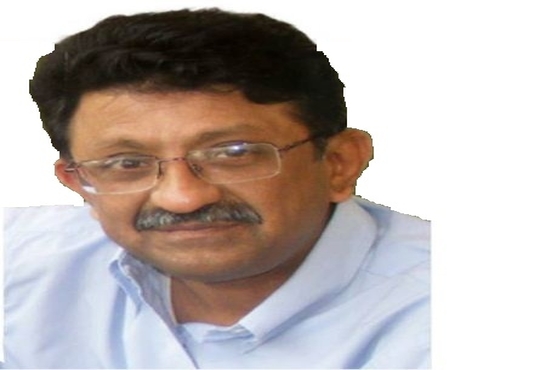A Critical View of the Rural Scenario in India

S. Giridhar, Registrar and Chief Operating Officer, Azim Premji University
According to a recent study, only 2 percent of the rural population is educated beyond higher secondary level, compared to the urban population. While most students from rural areas can only dream of going to schools, the students in urban areas have easy access to world class schools and colleges. What no one realizes is that 80 percent of the children in our nation do not receive adequate education. The 15 percent of these children who survive the 12 years of rote learning in schools enroll for three desultory years of college education. The tragedy in rural India is that most of the schools and colleges are understaffed, with teachers who lack motivation due to poor pay and little infrastructure which is not adequate to support the students. Furthermore there is no sensible monitoring of quality and nobody has even the remotest idea of what the students learn from the 15 years spent in school. Despite having 600 universities, over 30,000 colleges and a large number of schools, majority of children in India are illiterate.
Although the Right to Education Act has been implemented in the majority of states in India, many schools and colleges in rural areas do not function properly due to poor infrastructure; reduce in the number of students attending classes and lack of transportation. Most people living in remote rural areas have meager incomes, which at times is too less to sustain a family of maybe four or five members. Moreover, most children from these families won�t be sent to schools or colleges, instead they would be asked to assist the earning member of the family to add up some extra income.
Another problem is when these earning members have to move across to another location in order to help sustain their families; the family moves along without giving a thought whether there will be a school or college in the new location that their children can attend. On the other hand, lack of proper infrastructure at these rural schools is also a big concern, as most of these schools don�t have proper classrooms, teaching equipment, playgrounds and even basic facilities like clean toilets. Thus, the poor conditions of schools are big reasons to drive students away.
When the Azim Premji Foundation was established about 13 years ago, it was decided that they would work with the local governments of various states to improve the education scenario in the rural sections of these states. They have worked with the governments of Rajasthan, Uttara Khand, Madhya Pradesh, Karnataka and Andhra Pradesh and while doing so had ensured to select districts where they felt they could contribute. For example, in north east Karnataka, with the help of the Karnataka School Quality Association, they helped out the Gulbarga along with seven other poor districts by trying to shift the learning method from mugging and rote, to concept learning. Another example is of their work in Uttarakhand where the exams of the schools have been changed due to the change in the learning process.
They also established the Azim Premji University which caters to all kinds of students who come with different backgrounds and from different walks of life but with a passion to develop our nation socially and holistically. The university provides courses such as Master of Arts Education and Master of Arts in Development. These courses help the students specialize in School Leadership, Curriculum and Pedagogy and also in Livelihood, Law & Governance, Public Policy, sustainability and health and nutrition respectively. By providing such courses the university has been able to provide the students opportunities to support and guide the future generation. The amazing aspect is that about 40 percent of the students at this University come from small towns and rural backgrounds and are given financial aid by the University. Also, about 70 to 75 percent of the students have got themselves employed with grass root level organizations.
The reason why I have mentioned Azim Premji University, apart from the fact that I am one of its high ranking official is not to praise it but to set it as a beacon of hope to inspire the people of the nation to setup more such foundations and universities which will give back to the society but more importantly to the nation. Furthermore, I hope that with these establishments, the people of this nation will realize that education needs to become a public service and at the same time possess a not for profit making business model. By setting up, not for profit institutions, which have transparency in governance; most of these unfortunate children will be able to become literate and therefore provide them the opportunity to live their dreams and change the path of this nation to a brighter one.
(As told to Dylan D�Souza)
Giridhar. S, Registrar and Chief Operating Officer
He has 24 years of experience in the corporate sector and over 8 years in the Not for Profit sector. He is currently the Registrar and Chief Operating Officer of Azim Premji University. Prior to joining Azim Premji Foundation, Giridhar was with Wipro for over 13 years and was the General Manager at Wipro BioMed, the Business Unit for Bioresearch, Diagnostic and Medical Equipment and
Consumables.
Although the Right to Education Act has been implemented in the majority of states in India, many schools and colleges in rural areas do not function properly due to poor infrastructure; reduce in the number of students attending classes and lack of transportation. Most people living in remote rural areas have meager incomes, which at times is too less to sustain a family of maybe four or five members. Moreover, most children from these families won�t be sent to schools or colleges, instead they would be asked to assist the earning member of the family to add up some extra income.
Another problem is when these earning members have to move across to another location in order to help sustain their families; the family moves along without giving a thought whether there will be a school or college in the new location that their children can attend. On the other hand, lack of proper infrastructure at these rural schools is also a big concern, as most of these schools don�t have proper classrooms, teaching equipment, playgrounds and even basic facilities like clean toilets. Thus, the poor conditions of schools are big reasons to drive students away.
When the Azim Premji Foundation was established about 13 years ago, it was decided that they would work with the local governments of various states to improve the education scenario in the rural sections of these states. They have worked with the governments of Rajasthan, Uttara Khand, Madhya Pradesh, Karnataka and Andhra Pradesh and while doing so had ensured to select districts where they felt they could contribute. For example, in north east Karnataka, with the help of the Karnataka School Quality Association, they helped out the Gulbarga along with seven other poor districts by trying to shift the learning method from mugging and rote, to concept learning. Another example is of their work in Uttarakhand where the exams of the schools have been changed due to the change in the learning process.
They also established the Azim Premji University which caters to all kinds of students who come with different backgrounds and from different walks of life but with a passion to develop our nation socially and holistically. The university provides courses such as Master of Arts Education and Master of Arts in Development. These courses help the students specialize in School Leadership, Curriculum and Pedagogy and also in Livelihood, Law & Governance, Public Policy, sustainability and health and nutrition respectively. By providing such courses the university has been able to provide the students opportunities to support and guide the future generation. The amazing aspect is that about 40 percent of the students at this University come from small towns and rural backgrounds and are given financial aid by the University. Also, about 70 to 75 percent of the students have got themselves employed with grass root level organizations.
The reason why I have mentioned Azim Premji University, apart from the fact that I am one of its high ranking official is not to praise it but to set it as a beacon of hope to inspire the people of the nation to setup more such foundations and universities which will give back to the society but more importantly to the nation. Furthermore, I hope that with these establishments, the people of this nation will realize that education needs to become a public service and at the same time possess a not for profit making business model. By setting up, not for profit institutions, which have transparency in governance; most of these unfortunate children will be able to become literate and therefore provide them the opportunity to live their dreams and change the path of this nation to a brighter one.
(As told to Dylan D�Souza)
Giridhar. S, Registrar and Chief Operating Officer
He has 24 years of experience in the corporate sector and over 8 years in the Not for Profit sector. He is currently the Registrar and Chief Operating Officer of Azim Premji University. Prior to joining Azim Premji Foundation, Giridhar was with Wipro for over 13 years and was the General Manager at Wipro BioMed, the Business Unit for Bioresearch, Diagnostic and Medical Equipment and
Consumables.

